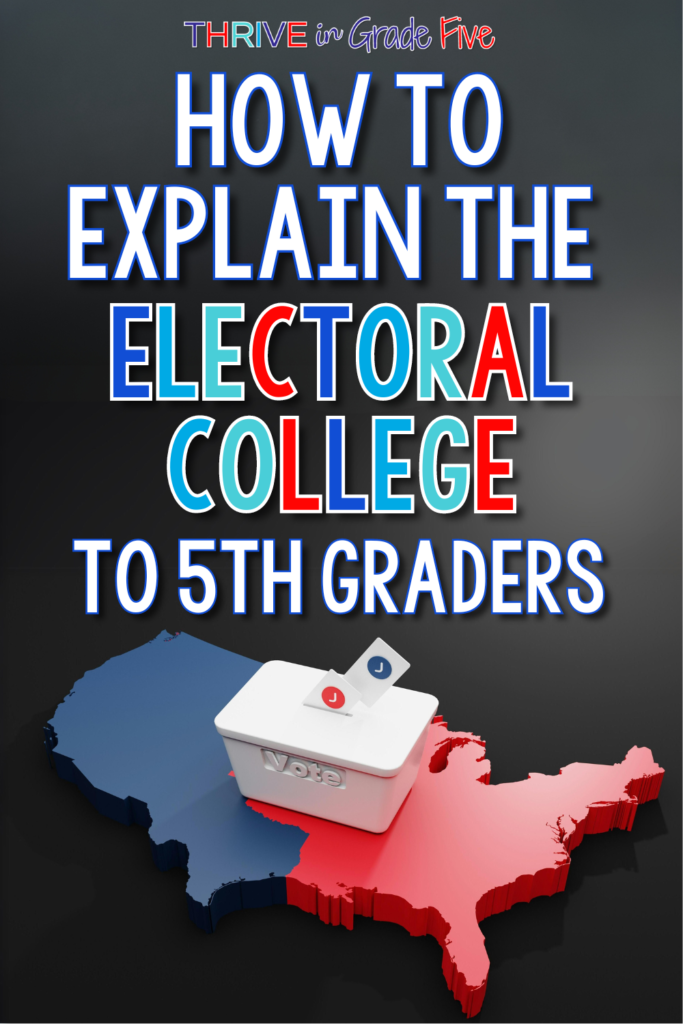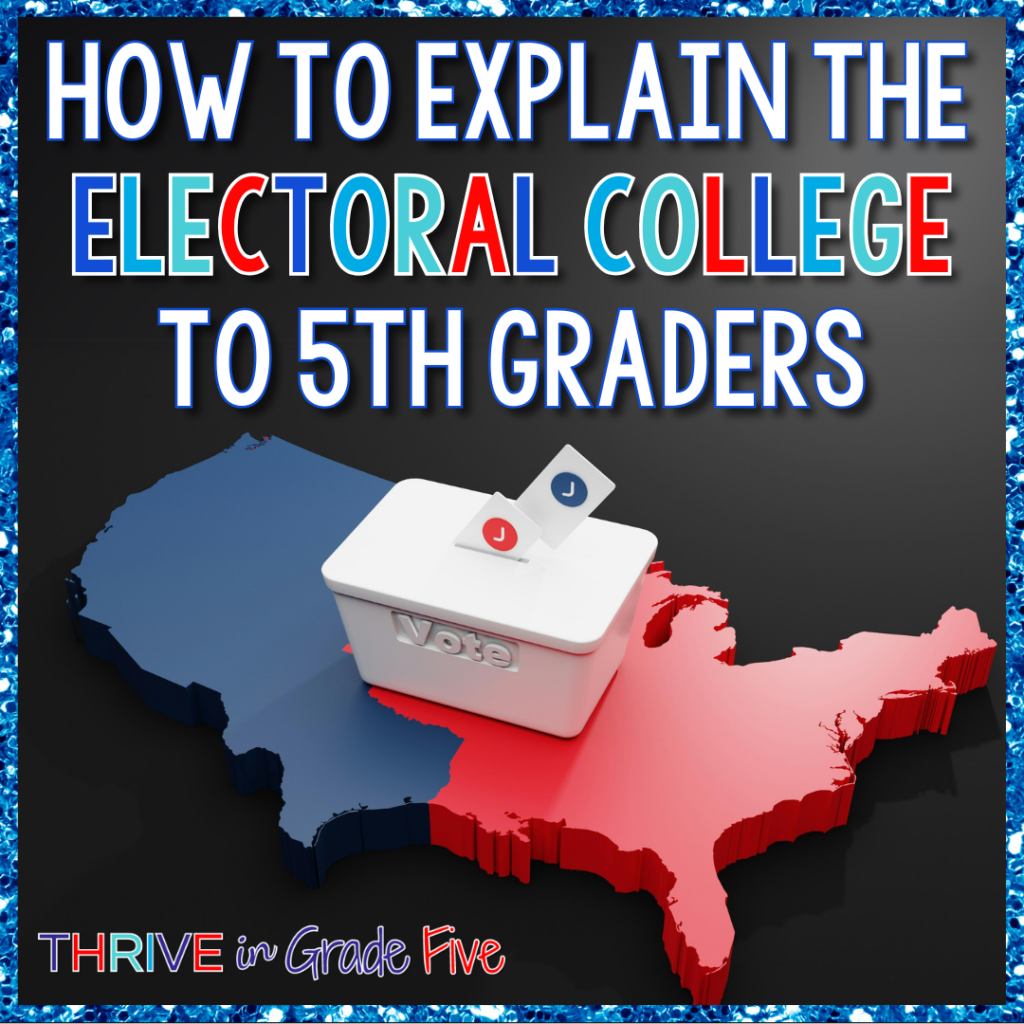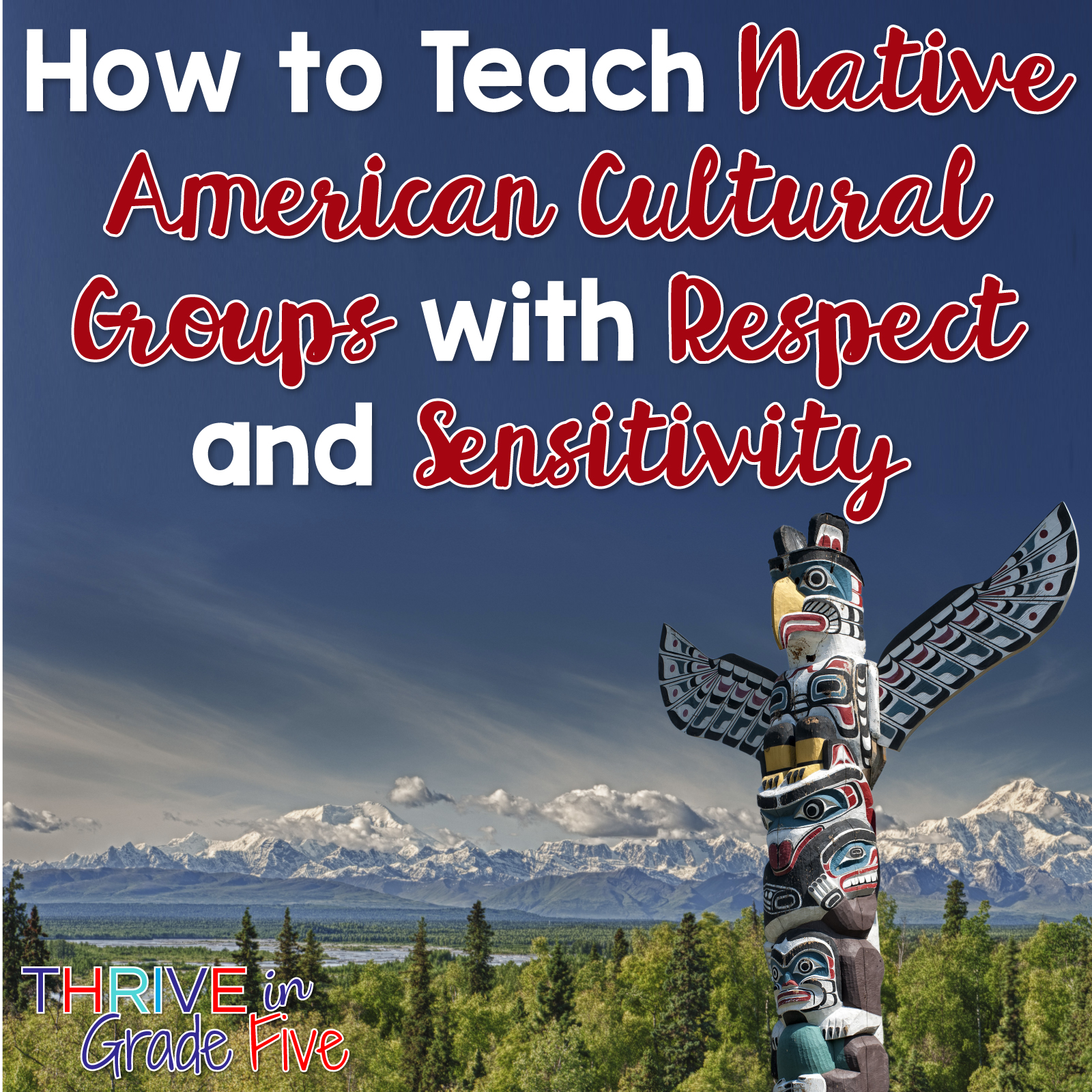If you’ve ever tried to explain the electoral college process to 5th graders, you know it’s a challenging concept.
I can say with absolute certainty that if you asked people on the street, many of them would say that the electoral college is a place. 😄
Our students need to understand that the electoral college is a process, not a place.
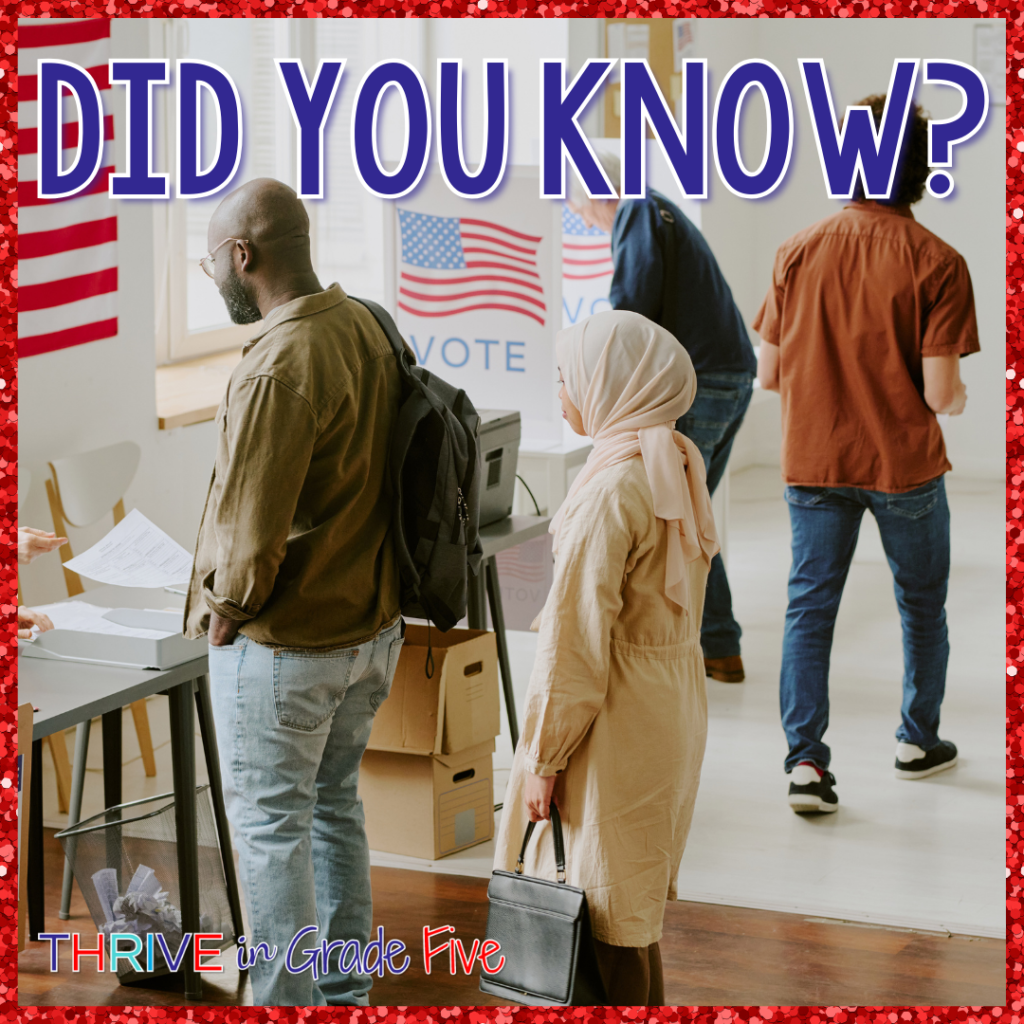
Did you know?
Americans do not DIRECTLY vote for President of the United States.
I’ll admit it… I was an adult before I fully understood this fact. It’s actually kind of disappointing, in my opinion.
I live in a highly red state, so it doesn’t really matter how I vote for President, my state’s electoral votes are given to the Republican candidate in a landslide.
I do still vote, however, and I tell my students that I vote because showing up matters, casting a vote matters, and there are other issues and races on the ballot that matter.
The number of Americans who vote for President is known as the popular vote, but our presidents are actually chosen by the electoral college.
Before going on, be sure to grab my free Election 2024 Map to help students keep track of the electoral college votes as they roll in on Election Day.
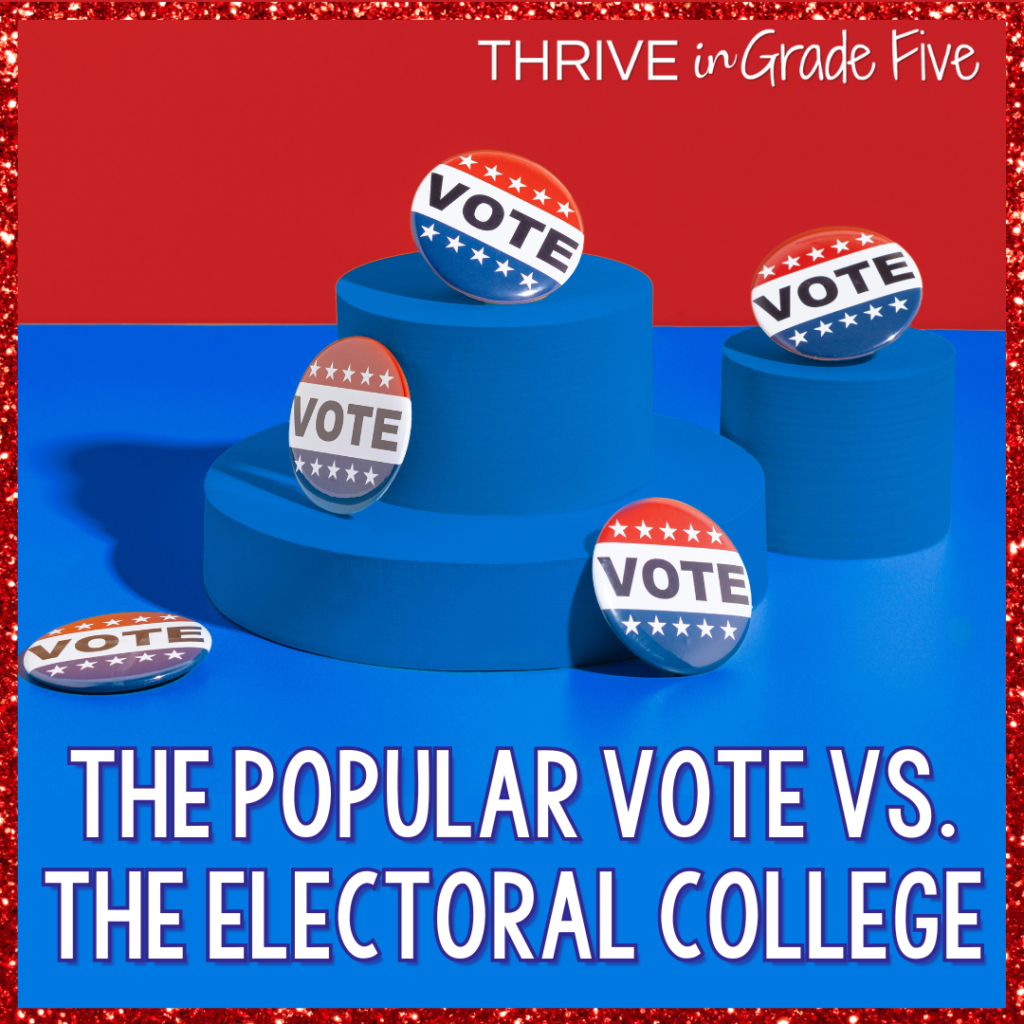
The Popular Vote vs. The Electoral College
Our students are familiar with voting. They’ve voted for favorite ice cream flavors, class president, and etc. In their voting experience, the popular vote has always been used to determine a winner.
The electoral college is a completely new system for them, so you’ll need to help them connect what they know about voting with the electoral college system that our country uses.
Honestly, many adults don’t understand the concept of the electoral college, so I think it’s best to explain this aspect of the presidential election process as simply as possible.
It is interesting to point out to students that sometimes a candidate will receive the most votes from Americans across the nation (popular vote), but they’ll lose the electoral vote. This has happened five times in United States history so far.
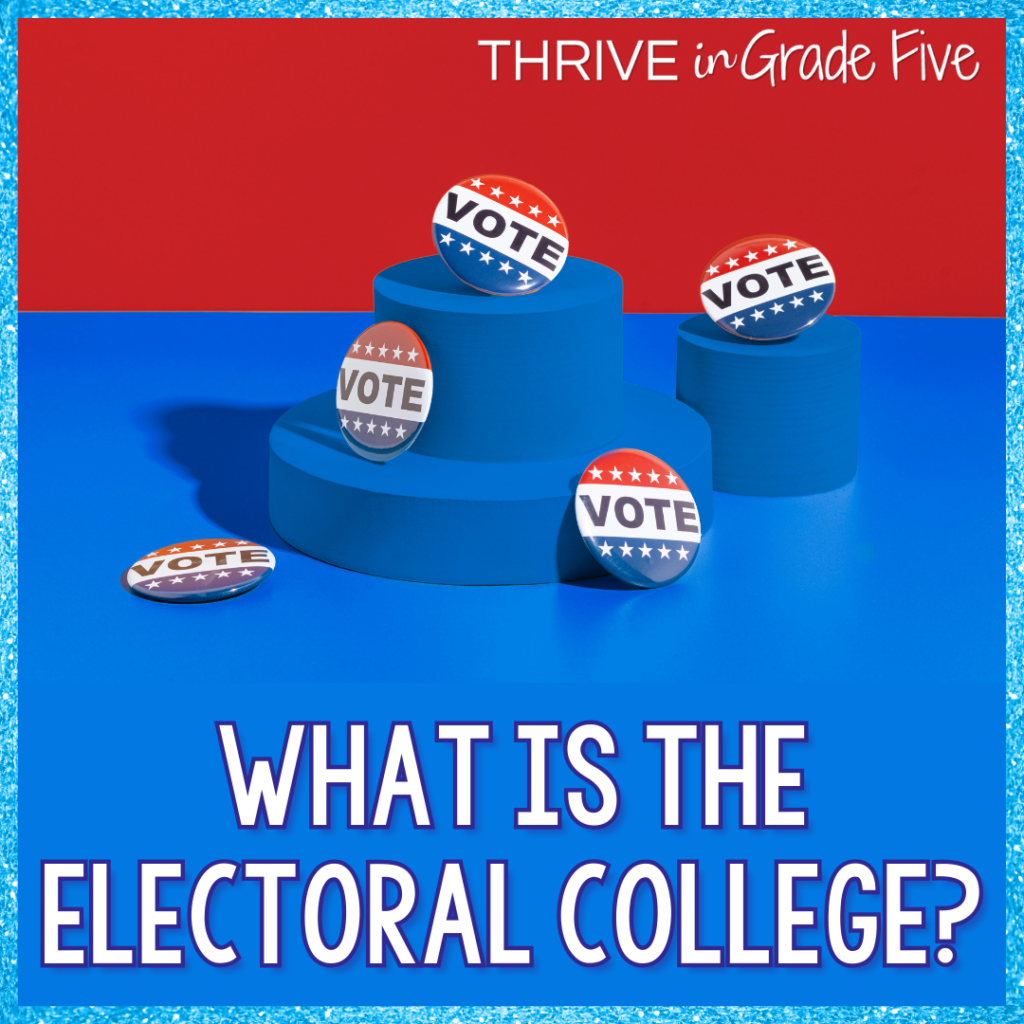
What is the electoral college?
Each state is assigned a certain number of electors. These electors are the men and women who actually vote for the President.
Every state has at least three electors. This is because the number of electors equals the Senators (2) and Representatives (at least 1) who represent the state in Congress. Washington, D.C. has three electors. There are a total of 538 electors.
If you need a ready-to-use set of Election 2024 Slides, this is my recommended resource. Teach the election PROCESS, and avoid politics or bias. This resource includes an engaging layer book so that students can show off what they’ve learned!
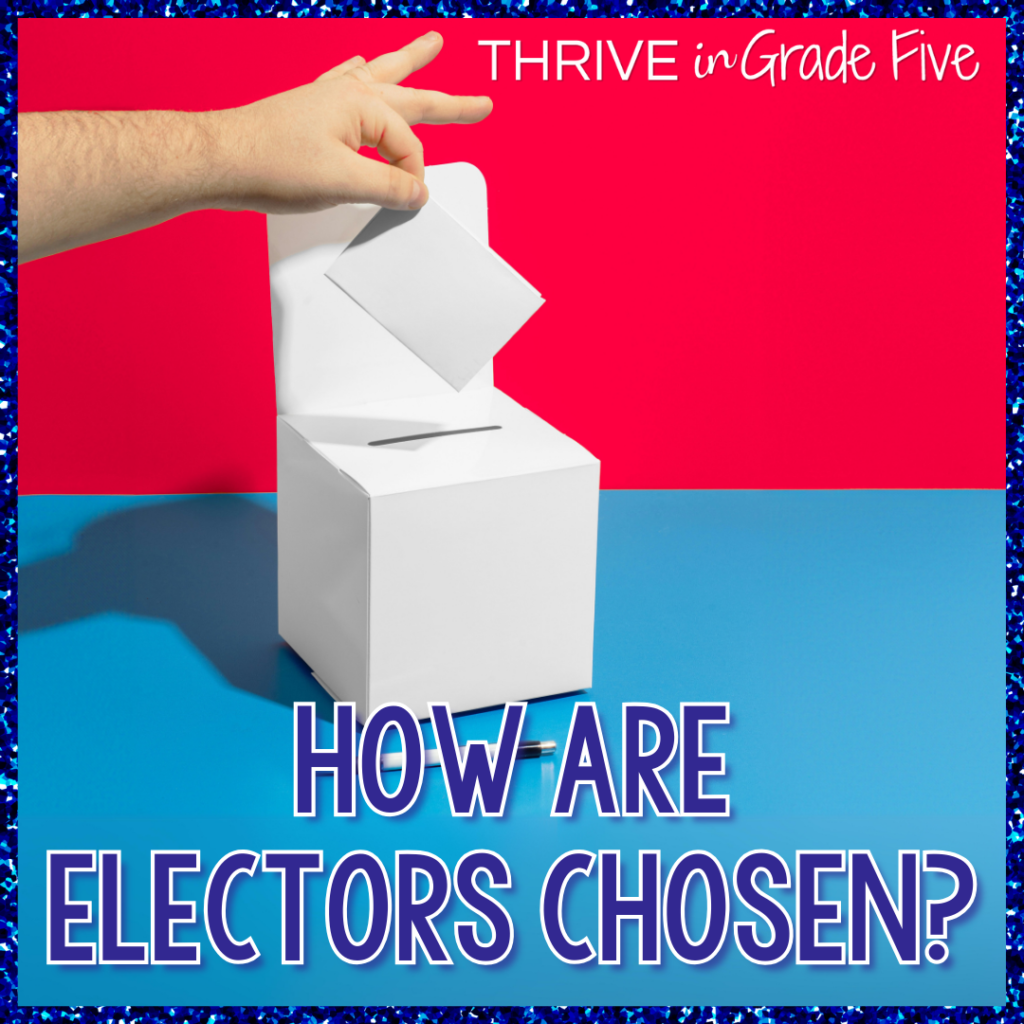
How are electors chosen?
The two main political parties in the United States, Republicans and Democrats, each choose candidates for president and vice president.
When citizens in each state cast their votes for president, they are actually voting to select electors. So, every person who casts a vote for president is not directly voting for their preferred candidate.
Instead, citizens are casting votes to tell their states which candidate they want the state’s electors to vote for when the electors meet.
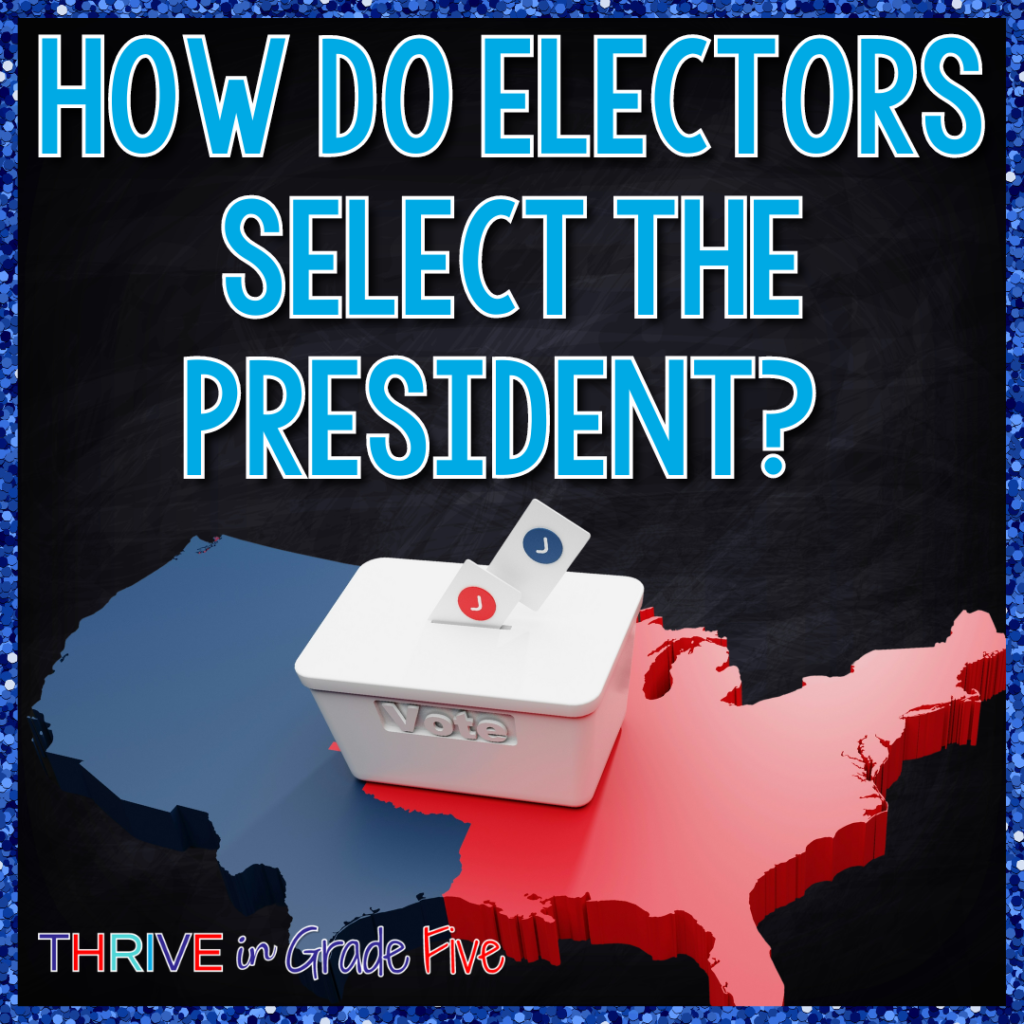
How do electors select the president?
Electors must promise to vote for their party’s candidates. The month after Election Day, electors meet in their own states and cast their votes. The votes are counted and the presidential winner is declared.
To win the election, a candidate must secure 270 electoral college votes. Use a little math to show students that half of the 538 total electors is 269. Winning a majority of electoral votes means a candidate secures more than half of the votes, or at least 270.
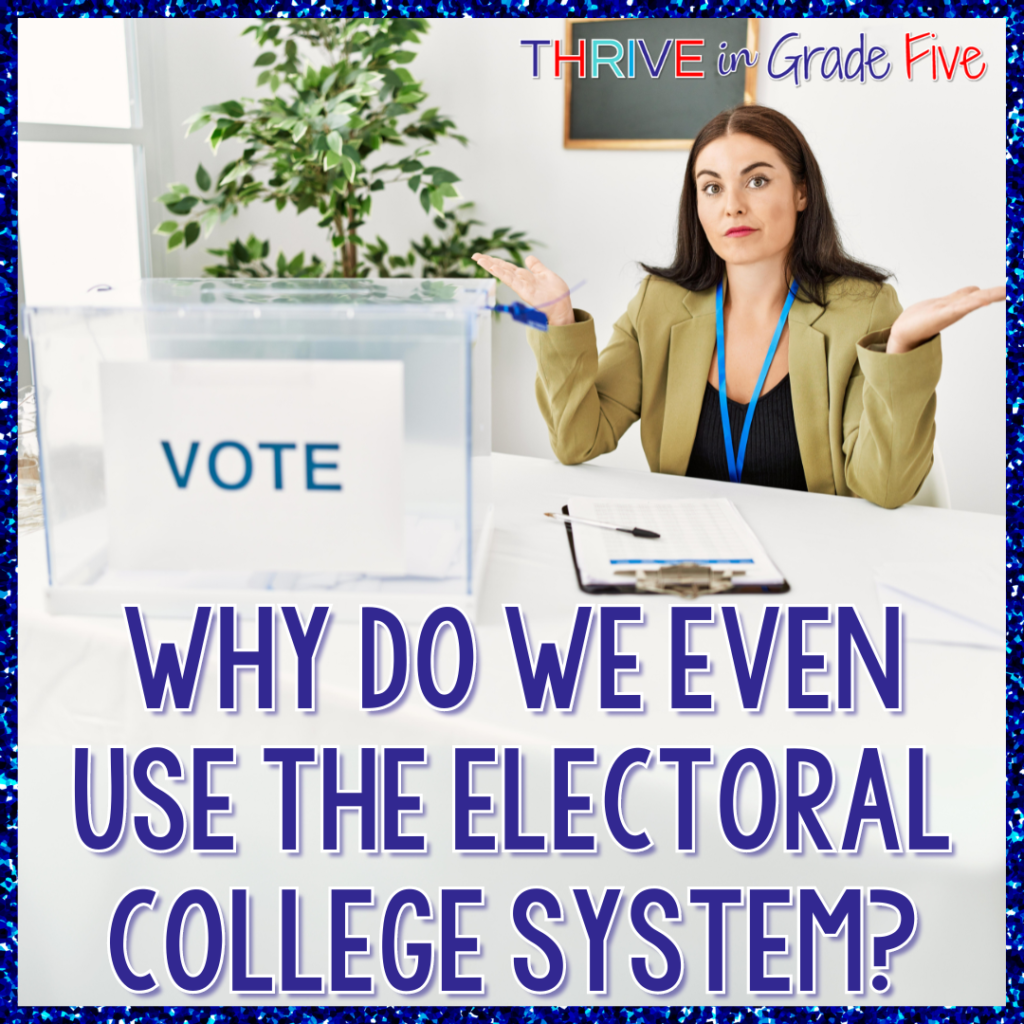
Why do we even use the electoral college system?
Students always ask this and I think it’s a valid question.
Our founding fathers didn’t trust average folks to cast informed, researched votes for President of the United States.
It’s completely understandable that the founding fathers chose the electoral college system, because in the 18th Century, news spread slowly and inefficiently. Many were illiterate. Education was not widespread.
So, I get it. Regular, everyday people may not have been the best voters for the highly valued office of president.
Today, it would take an Amendment to the Constitution to change this system, so it’s not likely to change.
In closing, keep it as simple as possible. Students need to know that the electoral college exists and that we use this system to elect our presidents.
Before you leave, be sure to grab my free Election 2024 Map to help students keep track of the electoral college votes as they roll in on Election Day.
